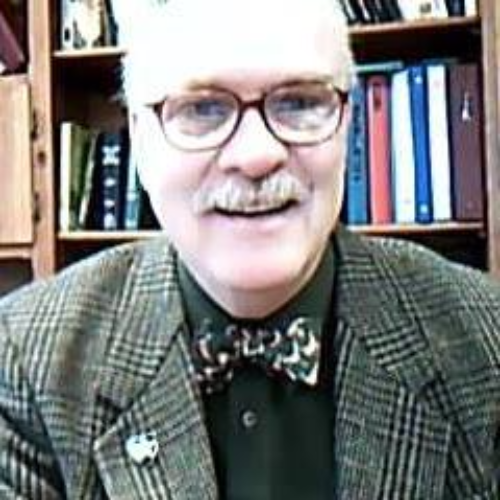-
The Word Of Lie Series
Contributed by Robert Leroe on Nov 28, 2017 (message contributor)
Summary: What we believe is confirmed by how we behave, especially how we care about others. This doesn’t mean perfection, but it does mean progress, that true faith makes a difference in how we live and love.
The First Epistle of John: “Collecting Evidence of Faith”
“The Word of Life”, 1:1-4 -Pastor Bob Leroe, Cliftondale Congregational Church, Saugus, Massachusetts
Just as crime-scene investigators gather evidence to determine “whodunit”, the Apostle John has compiled a set of proofs to verify the authenticity of faith. A key purpose of this letter is helping believers with assurance of their salvation. Genuine belief is characterized by godly living. There’s a difference in the lives of those with authentic faith. What we believe is confirmed by how we behave, especially how we care about others. This doesn’t mean perfection, but it does mean progress, that true faith makes a difference in how we live and love. We’re not sinless, but true believers sin less. John calls into question all alleged spirituality. There are people with solid beliefs yet a lifestyle that calls their sincerity into question. John calls on us to examine ourselves, to do some soul-searching, and ask, in effect, “If I were arrested for being a Christian, would there be enough evidence to convict me?”
John considered it necessary to write a careful, detailed statement of the apostolic understanding of Christianity. As such, I John doesn’t read like a letter; it’s more of a position paper. John’s message can be summarized by 3 tests:
1) The doctrinal test--faith requires a proper understanding of Jesus.
2) The social test--faith cannot be separated from love.
3) The moral test--faith expresses itself in righteousness.
= The result of verified faith is assurance of salvation.
John’s first letter was written in Ephesus around AD 90. Jerusalem had been destroyed by the Romans in AD 70, and Christians were scattered throughout the Empire. Ephesus was part of what is now modern-day Turkey. Christians traveled long distances to hear from John his first-hand account of the life of Jesus. John didn’t have a second-hand religious experience but an personal connection with Jesus. He didn’t read about Jesus in a book; he wrote the book! This gives his testimony authority.
Verses 1-4 form the Prologue to this epistle. The verses are almost song-like. John begins as he began his Gospel, describing the eternal Word-made-flesh. Jesus is the personal expression of the invisible God, the divine revealed in human form. Jesus is called the “Word of Life” because He is both the Proclaimer of the divine Message, and the Message itself. He is the embodiment of the Message. He is not merely a communicator of truth; He is Truth incarnate. False teachers were denying this, but John was an eyewitness to Jesus. By calling Jesus the Word (in the original Greek: logos), John is using a popular term from Greek philosophy; the Logos was the rational principle governing the universe. John identifies what was considered an impersonal force in a very personal way. He wants us to know the reality of Jesus, Who existed from limitless eternity, yet entered our world in human form.
God has revealed Himself in Creation, in the Scriptures, but the ultimate and most complete revelation of God is in His Son, Who is the Word of Life. Our words reveal what we think and feel; Jesus reveals the mind and heart of God. This Word can be known. The word “beheld” in Greek means to observe in an intent, dramatic sense and forms the root of our English word “theater”. John puts Jesus on center stage, and the Jesus he knew communicated to a lost world what it means to know God and know life.
As Christians, we accept as true that God became human; that Jesus is God-the-Son. We believe He suffered and died to take our punishment; He rose from the dead and ascended to Heaven. We worship Him and pray to Him, knowing that He can change our lives now and for all eternity.
Those who follow Jesus enjoy Fellowship (vs 3). There are two kinds of fellowship: with God, and with fellow believers. Fellowship with God means access to God through Christ. The path to fellowship with God can only be reached by cleansing from sin through the death of Jesus. We sing “What a Friend we have in Jesus” because He has promised to be close to us wherever we are. Jesus is closer than a brother. This is also something John had experienced. He’s referred to as the “beloved disciple”, the one who in the Upper Room laid his head upon Jesus and was part of our Lord’s inner circle. He was one of the very few who were at the Cross, and the one to whom Jesus entrusted the care of his mother Mary. And John is saying that we can have fellowship with Jesus. Our sins separate us from God, but Jesus is the Bridge that leads us to the Father and eternal happiness.
Fellowship with other Christians means we enjoy a new relationship with other believers, a spiritual connection. We’re joined together by a common purpose and devotion to Christ that makes us a united faith community, growing together in love. In John’s day, the world outside the church was a place of darkness and persecution. Shared suffering produces a bond. Christian fellowship has been called “a life together unlike any shared life in the world” (Burge).

 Sermon Central
Sermon Central



